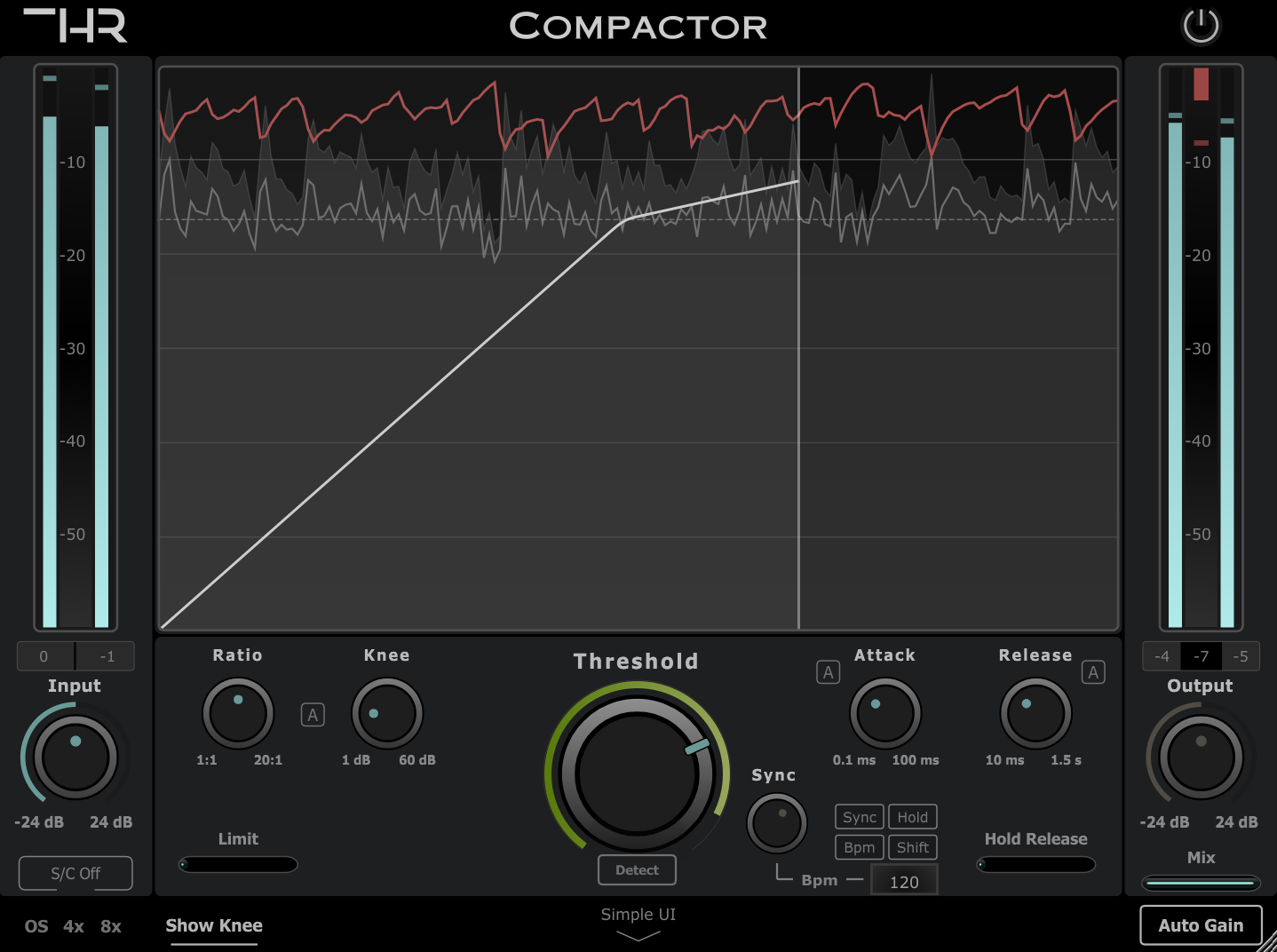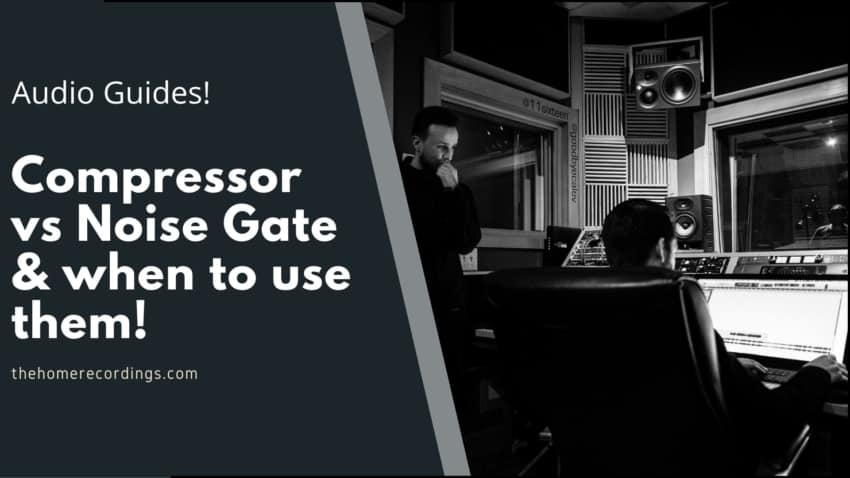Last updated on February 1st, 2024 at 09:45 pm
Compressors and noise gates are extremely popular, both when playing instruments or in a live setting, as well as in the studio while mixing.
In this article, I will be going over the differences between a compressor and a noise-gate and when you should use each one.
Here’s the short answer: Compression is used to lower the dynamic range between the softest and the loudest sounds in an audio file, evening everything out. A gate is designed to completely cut off the signal until it reaches the threshold at which point the entire signal is allowed through, and this helps to eliminate unwanted noises, such as hum.
If this information is enough for you, absolutely fantastic! However, here’s a more in-depth description of what a compressor and a noise gate do and I will also go over which one to use depending on the situation.
What does a compressor do?

A compressor is designed to lower the dynamic range between the softest and the loudest sounds in an audio file to make everything more even. Essentially, it increases the volume of the overall audio file while decreasing the volume of the loudest parts so there’s not that much of a difference between them.
Here’s an example of what I mean: Imagine you’re watching a movie where people are talking at a fairly low volume and suddenly there is a really loud explosion. A compressor will lower that sudden peak of volume to prevent you from jumping off your couch while still preserving the sound and the impact of the explosion.
Of course, going overboard will kill the dynamics of your music making it sound stale and lifeless because everything will be the exact same level.
One thing to note is that compression does affect the tonal characteristics of the track, which is one of the main reasons people choose one over the other, to make the track sound “punchy, smooth, in your face, etc.”. It also adds sustain to the signal (when playing guitar, bass, etc., for example) since it keeps the signal from dying down.
Using a compressor while playing music is a great way of keeping the dynamics consistent, but it’s also the best way of adding punch to your mixes and to even everything out to keep some random loud volume spikes from poking their head out.
If you want to know exactly how every different component in a compressor works, what the knee, the ratio, attack & release do, then here’s an article where I explain just that!
What does a Noise-Gate do?

Noise gates work by completely cutting off the signal until the threshold, which is controlled by you, is exceeded. Once the signal exceeds the threshold , the gate “opens” and lets everything through.
It’s a great way of reducing unwanted noises, both in a mix or in live situations, since it keeps hum from being audible while the instrument isn’t playing, but then lets everything through once the actual instrument is played since the signal becomes loud enough for the gate to “open”.
Example: You know how a high-gain guitar amp always has a lot of hum/white noise when the guitar is not being played, even if you turn the volume knobs all the way down on the guitar? Engaging the gate and adjusting the threshold so that the hum completely disappears while the guitar is not being played means that it won’t add any unwanted noise while it’s not being played, but as soon as you hit a note the gate will “open” and let everything through.
This can also be used while mixing, be it on parts of the drum kit, such as the toms, for example, since you can set the gate to only trigger when the toms are being hit but not by any other part of the kit, which will remove unwanted noise from the mix.
Now, there are also frequency-dependent gates which only act on specific frequencies, also set by you, and that let everything else through the entire time, and these are very useful when you’re trying to keep hi-hat sounds out of the tom & snare mics, for example.
When to use a noise-gate vs a compressor?
A noise gate should be used when trying to remove hum or similar unwanted noises, whereas a compressor should be used to control the dynamics of the signal by lowering the volume of the loudest peaks while simultaneously increasing the volume of the rest of the track.
If you’re playing guitar, for example, if there’s a lot of hum coming out of the amp, using a compressor might actually increase the amount of hum since it raises the overall level of the signal while cutting the louder peaks.
Just try holding a note when using a compressor and listen to how the hum increases as the note you’re holding starts to die down. This happens because the compressor pedal is increasing the volume as the note is dying down, and the hum becomes, therefore, more apparent.
Conclusion
Use compression to add punch, percussiveness and to even out the sound by reducing the dynamic range between the loudest and quietest parts of the track.
Noise-gates should be used when trying to keep unwanted sounds from making it into the recording, from being heard in the mix, or to keep them at bay while in a live setting.
I hope this information was useful!
Have a nice day!

This is a really good article. I don’t own either type of pedals yet, and you’ve dumbed it down, so I have a good understanding now. Thank you!